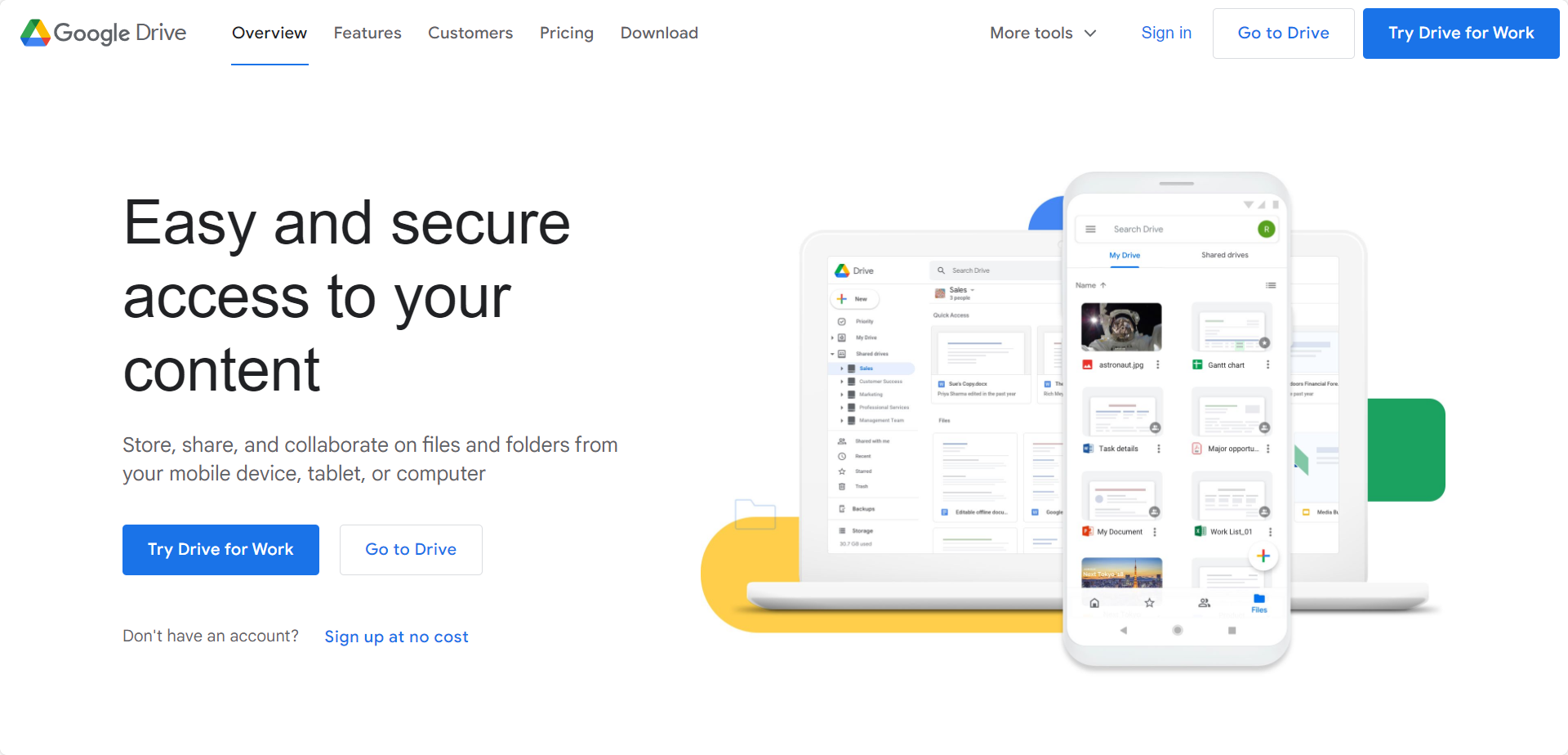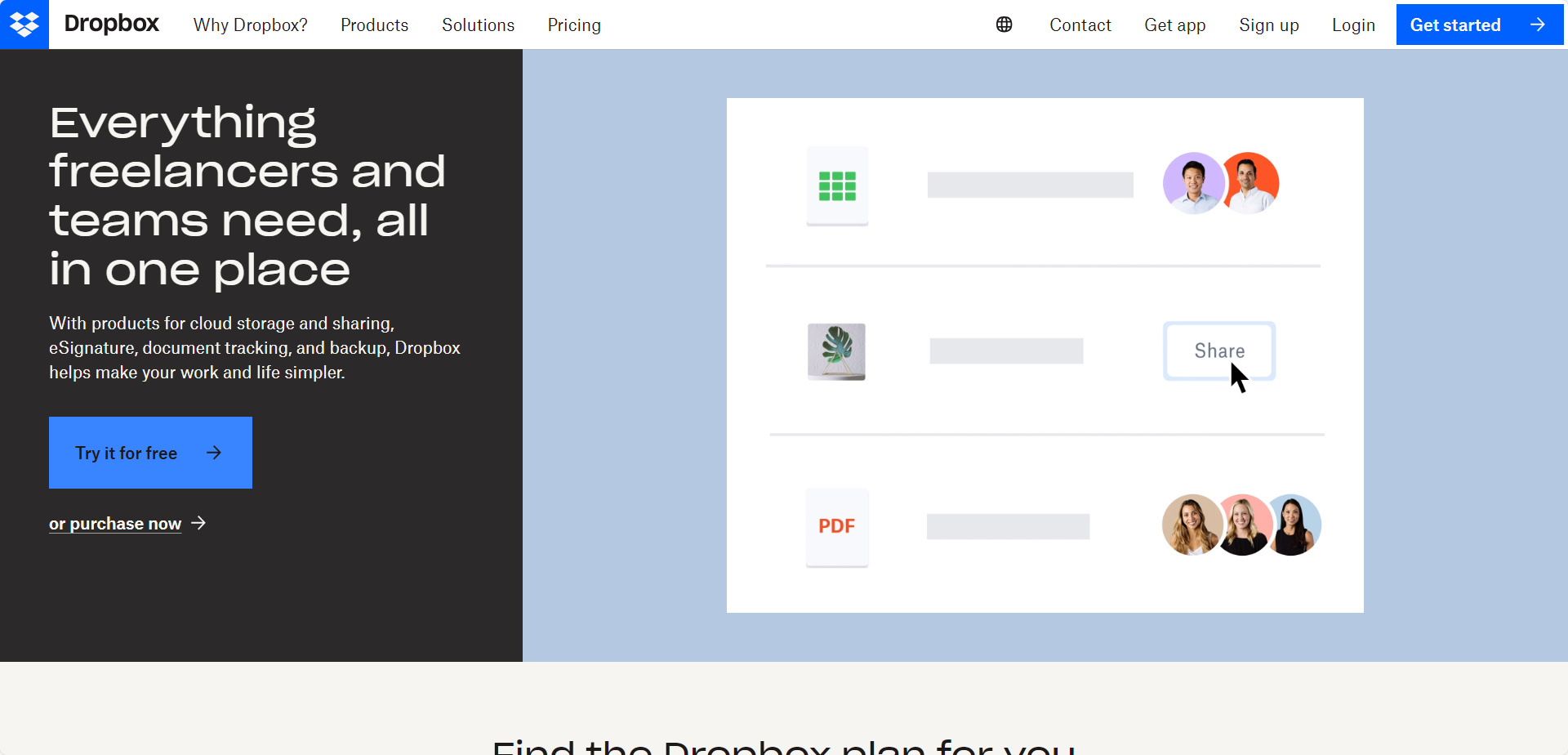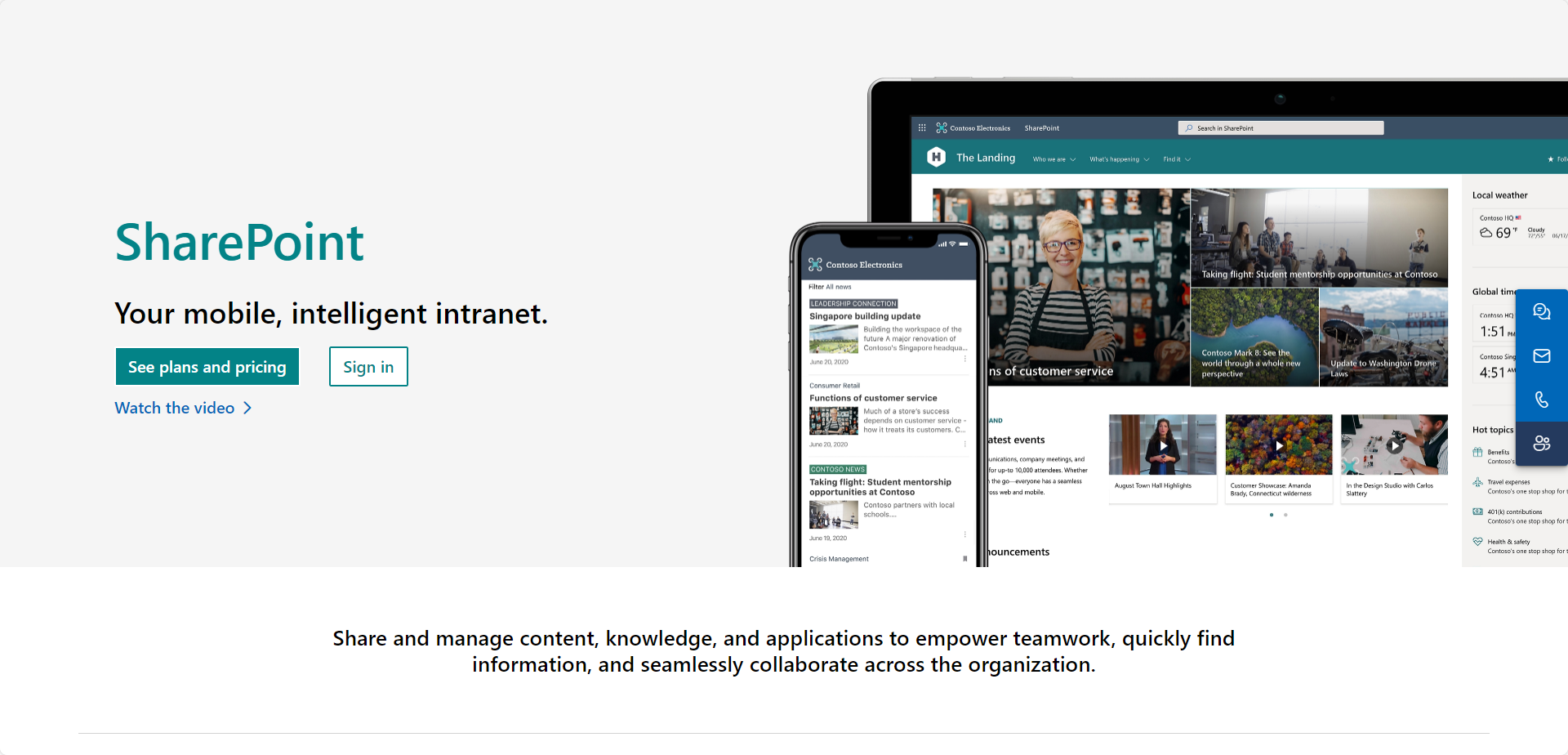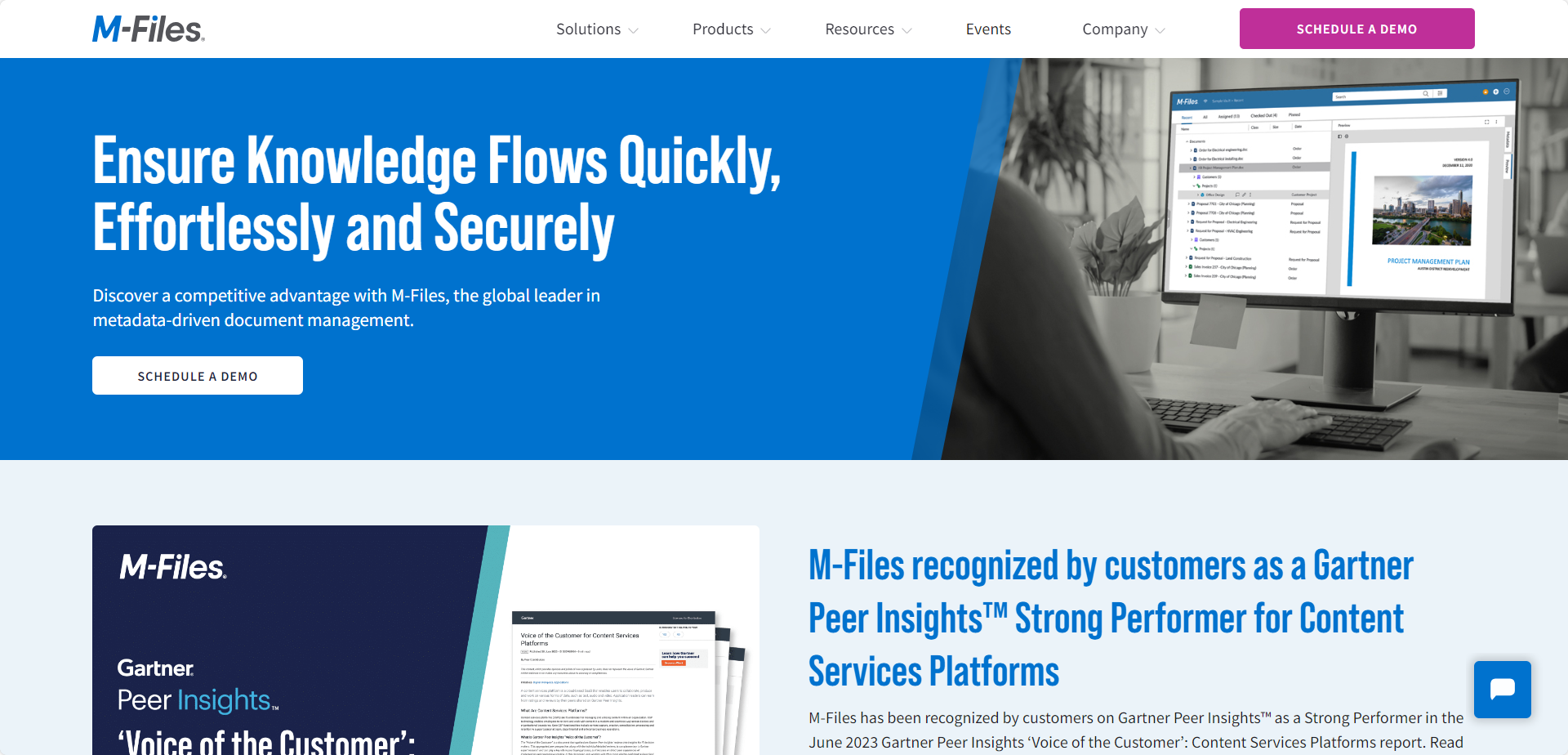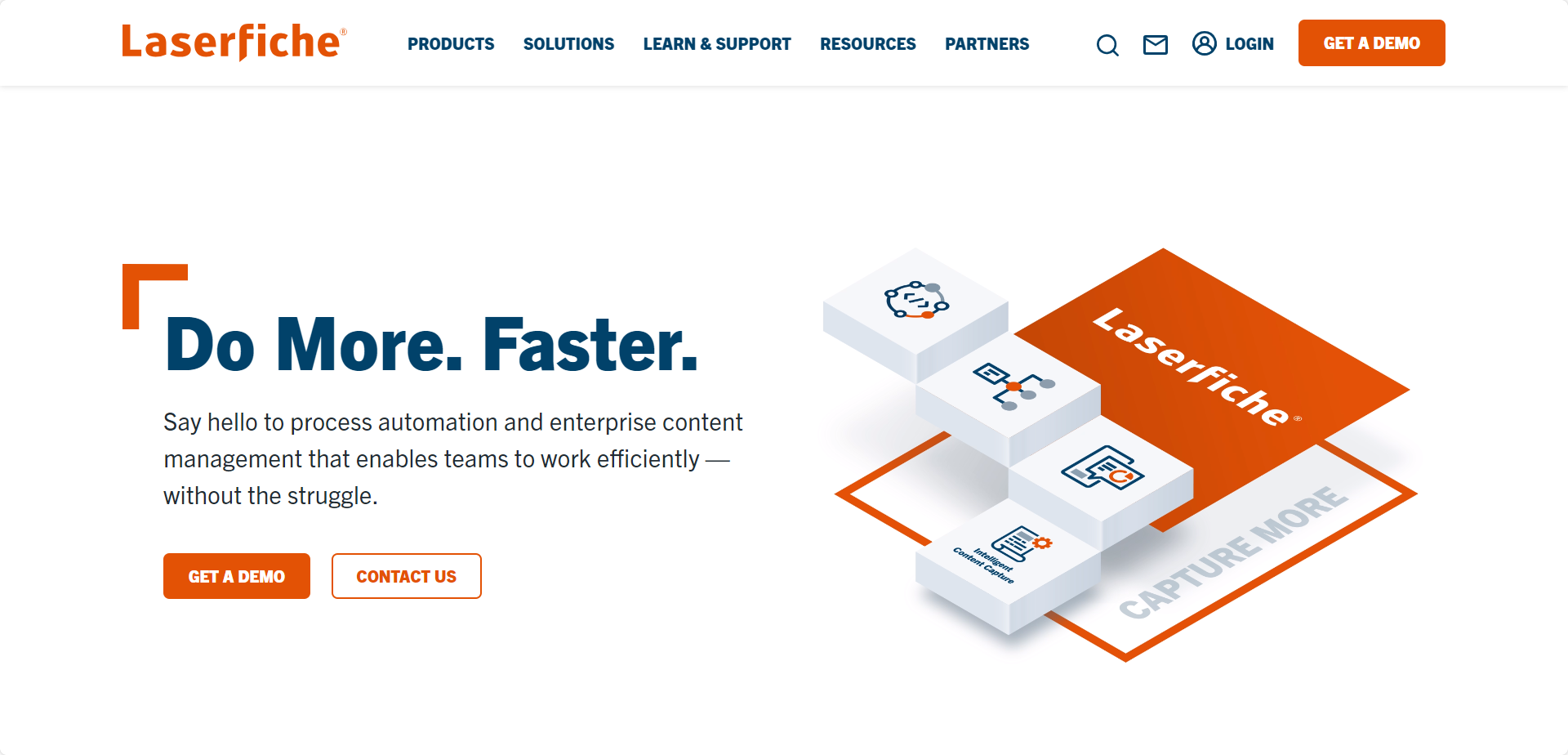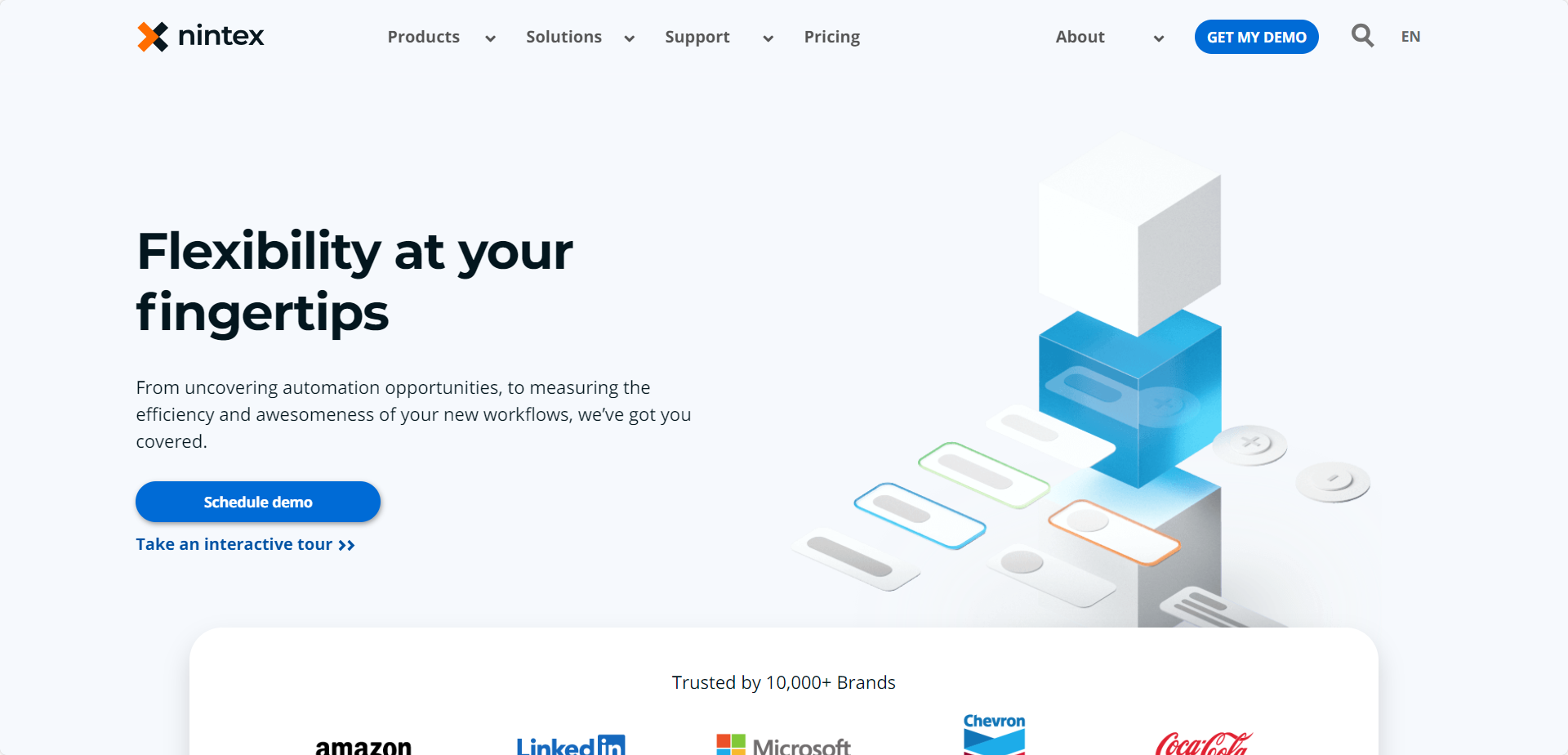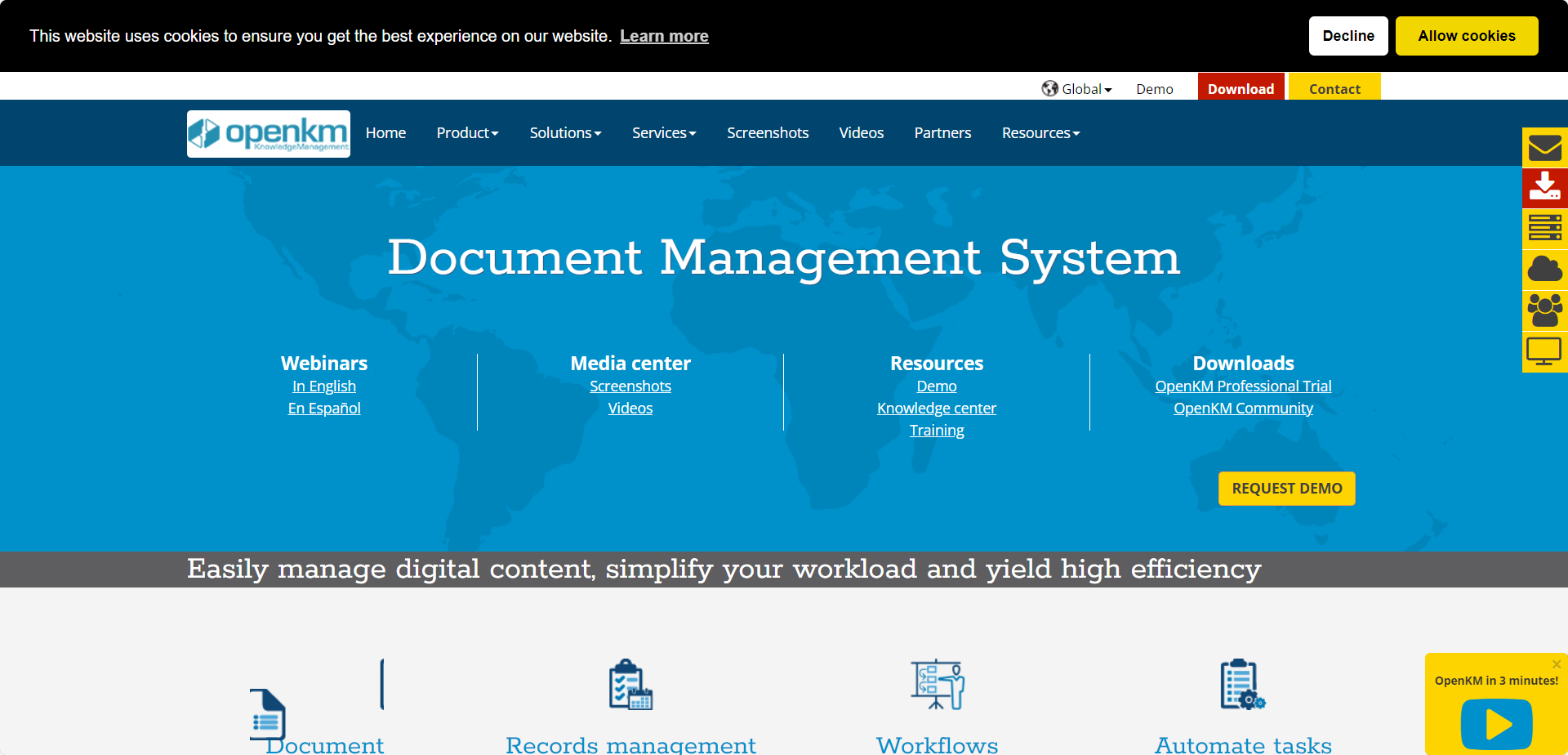Document Management: From Paper To Pixels
Discover the transformational journey of document management from traditional paper-based chaos to the seamless efficiency of digital solutions. Explore how the shift to pixels empowers collaboration, accessibility, and streamlined workflows.

In today's fast-paced digital landscape, the transition from paper-based documents to digital files has brought about a remarkable evolution in the way businesses handle their information.
Say hello to the world of efficient document management, where enterprise content is harnessed with the power of technology.
Imagine having all your important files, whether they're business documents or cute cat pictures, at your fingertips, ready to be accessed, collaborated on, and retrieved with a few clicks.
Let's dive into the enchanting realm of document management and explore its wonders.
Understanding Document Management and It's Key Features
Document management, in the context of digital document management, refers to the organized and systematic control, storage, retrieval, and manipulation of digital documents and files within an organization.
It involves using technology, software, and processes to efficiently manage the entire lifecycle of documents, from creation to archival.
Picture this: In the not-so-distant past, paper documents were like the stubborn relics of a bygone era, cluttering desks and cabinets, and getting lost in the shuffle. But fear not, for document management has come to the rescue!
At its core, document management is the process of organizing, storing, and accessing digital documents in a way that makes your work life smoother than a well-choreographed dance routine.
Why is it such a big deal? Well, imagine you're working on an important project, and you need to collaborate with colleagues from different corners of the globe. With document management software, you can kiss the days of mailing printed copies and waiting for weeks goodbye.
You can create, edit, and share digital documents in real-time, enhancing collaboration and efficiency. Plus, you'll have the magical ability to track changes, maintain version control, and even see who's been sprinkling their creativity into the mix.
In the digital world, the need for effective electronic document management systems has become more critical than ever before. Here are some compelling reasons document management is essential in the digital era:

Efficiency and Productivity: With the vast amount of digital information circulating, efficient document management guarantees that employees can quickly locate the files they need.
This saves valuable time and enhances overall productivity. Instead of spending hours searching for documents, employees can focus on more important tasks.
Easy Retrieval: Digital document management allows for rapid and accurate retrieval of files.
Robust search functionalities, metadata, and organized folder structures make finding specific documents a breeze, removing the frustration of digging through physical file cabinets.
Collaboration: In a globally connected world, collaboration is crucial. Digital document management facilitates seamless collaboration, enabling team members to work on the same document simultaneously, share feedback, and track changes in real time, regardless of their geographical location.

Version Control: Maintaining version control is a challenge with traditional paper documents.
In the digital world, document management systems keep track of different versions of a document, making it easy to revert to previous versions or view the evolution of a document over time.
Remote Work and Mobility: As remote work becomes more common, the ability to access, edit, and share documents from anywhere is essential.
Digital document management systems provide remote access to files, enabling employees to work efficiently whether they're in the office, at home, or on the go.
Space and Cost Savings: Storing paper documents requires physical space and resources. Digital document management cuts the need for physical storage and reduces costs associated with printing, photocopying, and shipping documents.

Enhanced Security: Digital document management systems offer advanced security features like encryption, access control, and audit trails.
This helps protect sensitive information from unauthorized access and provides compliance with data protection regulations.
Disaster Recovery: Physical documents are vulnerable to loss in case of disasters like fires or floods. Digital documents stored in the cloud or secure servers are protected against such risks and can be easily recovered.
Regulatory Compliance: Many industries have strict regulations regarding document retention and data privacy.
Digital document management systems help organizations adhere to these regulations by maintaining proper records, providing secure storage, and facilitating easy retrieval for audits.
Environmental Sustainability: Transitioning to digital document management reduces the need for paper, ink, and other resources associated with traditional documentation.
This contributes to a more environmentally sustainable approach and aligns with corporate social responsibility goals.

Streamlined Workflows: Automation features within document management systems allow organizations to automate routine tasks and workflows. This reduces manual errors, speeds up processes, and guarantees consistency.
Long-Term Accessibility: Paper documents degrade over time, but digital documents can be preserved indefinitely with proper backup and storage. This ensures that important information remains accessible for future reference.
What Does Document Management Entail?
There is a wide range of reasons why document management is important. By using this process, you guarantee complete control of your files and their storage.
This makes sure that you always have what you need at the click of a button. Here we delve a bit into the document management process.
Document Creation and Capture: The process begins with the creation or digitization of documents.
This can involve creating new digital files using software like Microsoft Word, Excel, or Adobe Acrobat, or converting physical paper documents into digital format through scanning or other means.
Organization and Categorization: Once documents are in digital form, they need to be organized logically.
This involves creating folders, categories, and metadata that help users quickly find and retrieve specific documents.
Metadata could include information like document type, author, creation date, and keywords. This aids in file management.
Storage: Digital documents need secure and accessible storage space. This can be on-premises or in the cloud.
Cloud storage solutions like Google Drive, Dropbox, or OneDrive provide remote access, collaboration features, and automatic backups.
Version Control: One of the key benefits of digital document management is efficient version control.
Document management systems allow users to track changes, view previous versions, and collaborate on documents without the risk of overwriting or losing information.
Access Control: Document management guarantees that only authorized individuals can access specific documents.
Role-based access control allows administrators to define who can view, edit, or delete documents, thus maintaining security and privacy.
Collaboration: Collaboration is streamlined with digital document management. Multiple users can work on the same document simultaneously, leave comments, suggest edits, and view changes in real time.
This removes the need for emailing attachments back and forth.
Search and Retrieval: Finding a specific document in a mountain of digital files can be challenging.
Document management systems offer advanced search capabilities, allowing users to search by keywords, metadata, or content, making document retrieval quick and hassle-free.
Workflow Automation: Many document management systems offer workflow automation, allowing organizations to design and automate processes around document approval, review, and distribution.
This enhances efficiency and reduces manual intervention.
Security and Compliance: Security features like encryption, access control, and audit trails guarantee that sensitive documents are protected from unauthorized access.
Compliance features help organizations adhere to industry regulations and standards.
Archiving and Disposal: Over time, documents may become obsolete or need to be archived for legal or regulatory reasons.
Document management systems facilitate proper archiving and disposal of documents, ensuring a clutter-free digital environment.
Integration: Document management systems often integrate with other software and tools that organizations use.
This can include email clients, customer relationship management (CRM) software, project management tools, and more.

Types Of Document Management Tools
- Cloud-Based Document Management Systems: Think of these as the wizards of the digital world.
They offer you the power to store your documents in the cloud (like Google Drive or Dropbox) and access them from anywhere with an internet connection.
You can wave goodbye to the days of lugging around hefty folders and be greeted by the convenience of online storage.
- Pros: Accessibility from anywhere, real-time collaboration, automatic backups.
- Cons: Requires internet connection, potential security concerns with cloud storage.
2. Enterprise Content Management (ECM) Software: This is like the grand library of your organization, but way cooler. It doesn't just manage documents; it handles the entire lifecycle of your content, from creation to archiving.
Imagine a fairy godmother keeping track of your files, making sure nothing goes missing.
- Pros: Comprehensive content management, compliance tracking, robust security features.
- Cons: Can be complex to implement and maintain, higher cost.
3. Electronic Document Management (EDM) Software: Ever wished your files could just organize themselves? EDM software makes that dream come true.
It uses metadata and keywords to sort and categorize your electronic documents, making them as easy to find as a treasure chest on a deserted island.
- Pros: Efficient search and retrieval, customizable metadata, streamlined organization.
- Cons: Initial setup may require effort and a potential learning curve.
4. Records Management Software: If your documents had a superhero guardian, it would be records management software.
It guarantees compliance with regulations by keeping an eye on document retention schedules and securely disposing of files that have outlived their purpose.
- Pros: Provides compliance, secure document disposal, and organized retention policies.
- Cons: Can be complex for smaller businesses, and may require dedicated staff.
5. Workflow Automation and Business Process Management (BPM) Software: These are like the enchanted scrolls that guide your tasks through a magical journey.
They help you streamline your processes, making sure everything flows smoothly and efficiently.
- Pros: Efficient workflows, process automation, reduced manual errors.
- Cons: May require customization, and initial setup effort.
6. Collaboration Tools: Imagine a virtual meeting room where you and your team can collaborate on documents in real time, leaving comments, suggesting edits, and working together harmoniously.
That's what collaboration tools offer, turning teamwork into a joyful symphony.
- Pros: Real-time collaboration, seamless communication, improved productivity.
- Cons: Limited to collaboration features, may lack advanced document management.
7. Open-Source Document Management Software: If you're a fan of DIY magic, open-source software lets you customize your document management experience. It's like having a spellbook and crafting your enchantments.
- Pros: Customizability, cost-effective, active community support.
- Cons: This may require technical expertise and potential integration challenges.

Effective Document Management Systems
There is a wide variety of document management software; let's get to it.
1. Google Drive: Your Virtual Filing Cabinet
Imagine Google Drive as a super-organized virtual filing cabinet that lives on the internet. It's like having a magical cloud where you can keep all your important digital stuff – documents, pictures, videos – safe and sound.
What makes it super cool is that you can access your files from anywhere using your computer or phone, as long as you have an internet connection.
You can also invite others to look at your stuff and even work on things together, like editing a document or planning a party.
It's easy to find things because you can search for them using keywords, just like searching for a specific book in a library. Super important for files like Google Docs.
2. Dropbox: Your Magic Sharing Box
Dropbox is like a magical box that you carry with you everywhere. You put your files in the box, and it makes copies of them in the cloud. This way, you can show your files to friends or coworkers without having to email them.
You can also work together on files and see each other's changes in real time. It's like having a special teleportation spell for your electronic files!
3. Microsoft SharePoint: Your Collaborative Headquarters
Think of Microsoft SharePoint as your digital headquarters. It's like a special place where your team can gather, share documents, and work on projects together.
Imagine you're all sitting around a big table, and each person has a special section with documents and tools. You can even use it to build websites and create cool intranet pages for your entire organization.
4. M-Files: Your Organizing Wizard
M-Files is like a magical organizing wizard for your files. It helps you sort your digital assets with special labels and tags so you can find them easily later.
It's like having a magical librarian who remembers where every book is stored in a huge library. Plus, it's smart – it knows when a file is updated, and it keeps track of all the different versions.
5. Laserfiche: Your Secure Vault
Laserfiche is like a super-secure digital vault for your important documents. It's designed to keep your files safe and follow all the rules about keeping sensitive stuff private.
It's perfect for places like hospitals where they need to make sure patient records are kept super secret.
6. Nintex: Your Task Automator
Nintex is like a friendly helper that automates your tasks. Imagine it's your fairy godparent who can do repetitive work for you. You tell Nintex what you need, and it makes things happen magically, saving you time and effort.
7. OpenKM: Your Customizable Organizer
OpenKM is like a set of building blocks for creating your perfect organization system. It's like having a big box of LEGO pieces that you can put together in any way you like.
You can make it work exactly how you want, like having a personal magic spell for organizing your documents.
Who Needs Document Management Systems?
Document management systems are like wands for everyone in the modern business world.
Small businesses seeking organization, large enterprises dealing with heaps of data, educational institutions handling student records, healthcare facilities managing patient information, legal firms handling sensitive documents – the list is endless.
If you deal with digital documents, collaborate with others, or need to keep track of versions and changes, a document management system is your trusty sidekick.
Selecting the right document management software is a bit like choosing a wand in a wizarding world—it has to resonate with you and make your tasks feel like a breeze.
Consider factors like scalability, user-friendliness, security measures, and integration capabilities. You want something that fits your needs as snugly as Cinderella's glass slipper.
Document Management Trends In The Digital World
Artificial Intelligence (AI) and Machine Learning (ML) Integration: AI and ML are being integrated into document management systems to automate tasks like document classification, data extraction, and even decision-making.
These technologies can predict user preferences, suggest relevant documents, and streamline workflows by crossing out manual processes.
Advanced Search and Natural Language Processing (NLP): Document management systems are becoming smarter at understanding natural language queries.
Users can ask questions in everyday language, and the system will provide relevant documents or sections, making it easier to find information quickly.
Blockchain for Document Security: Blockchain technology is being explored to enhance document security and authenticity.
It creates an unalterable record of document history, making it difficult to tamper with or forge documents. This is particularly useful in industries like legal, finance, and healthcare.
Enhanced Data Privacy and Compliance Features: With data protection regulations like GDPR and CCPA becoming more stringent, document management systems are focusing on robust privacy controls, consent management, and easier compliance with data retention policies.
Mobile-First Solutions: As remote work continues to be a standard practice, document management systems are emphasizing mobile-friendly interfaces and apps.
This allows users to access, edit, and collaborate on documents seamlessly from their smartphones and tablets.
Integration with Productivity Tools: Document management systems integrate with popular productivity tools like Microsoft 365, Google Workspace, and project management software.
This ensures that documents seamlessly fit into existing workflows and platforms.
Cloud-Centric Solutions: Cloud-based document management solutions are on the rise due to their scalability, ease of access, and cost-effectiveness.
Organizations are moving away from on-premise solutions to leverage the benefits of the cloud.
Automation of Workflows: Automation of document-centric workflows is gaining traction. This involves automating repetitive tasks, approvals, and routing of documents, resulting in streamlined processes and reduced manual errors.
Document Analytics and Insights: Advanced analytics tools are being integrated into document management systems to provide insights into document usage, collaboration patterns, and user behaviors.
This data helps organizations optimize their document strategies.
Hybrid Document Management: Some organizations are adopting hybrid approaches that combine digital document management with physical documents, creating a unified system that bridges the gap between paper and digital.
Enhanced Collaboration Tools: Collaboration features within document management systems are evolving to provide richer real-time collaboration experiences, allowing users to co-author documents, leave contextual comments, and communicate seamlessly within the platform.
User Experience and User-Centric Design: The focus on user experience is growing, with document management systems aiming to create intuitive interfaces that require minimal training.
User-centric design makes sure that users can quickly adapt to new tools and features.

That's A Wrap
In a world that's digitally charged and constantly evolving, the realm of document management shines as a beacon of efficiency and organization.
From the days of paper chaos to the streamlined enchantment of digital solutions, document management has undergone a remarkable transformation that empowers individuals, teams, and organizations to harness the power of information with ease.
As we bid farewell to cumbersome file cabinets and endless paper trails, we welcome the era of digital document management with open arms.
The magic of systems like Google Drive, Dropbox, Microsoft SharePoint, M-Files, Laserfiche, Nintex, and OpenKM brings a new level of accessibility, collaboration, and efficiency to our work and personal lives.
Imagine the thrill of sharing a virtual space where documents are effortlessly stored, retrieved, and collaborated on from anywhere in the world. These tools not only store files but also bring them to life, allowing teams to weave their creativity together seamlessly.
The power to manage versions, access documents remotely, and automate workflows has never been more enchanting.
Document Management FAQ
Are document management systems secure?
Yes, many document management systems offer security features like data encryption, access controls, audit trails, and user authentication to protect sensitive information from unauthorized access.
What industries benefit most from digital document management?
Virtually every industry can benefit from digital document management. Industries like healthcare, finance, legal, education, and manufacturing often see significant improvements in efficiency, compliance, and data security.
How can I choose the right document management system for my needs?
Consider factors like your organization's size, document volume, collaboration needs, integration requirements, and security concerns when evaluating document management systems. Look for user-friendly interfaces and the features that align with your workflow.


